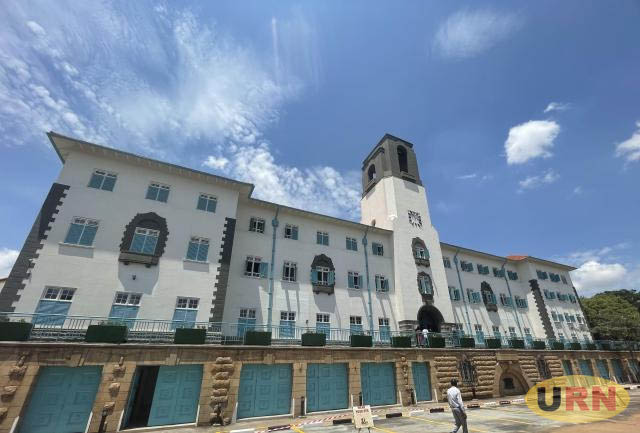
Kampala, Uganda | THE INDEPENDENT | Makerere University’s main administration building with its iconic ‘Ivory Tower’ will be re-opened today, nearly four years after it was destroyed by fire.
The building, which to many is the face of Makerere and a symbol of pride for the university, was severely damaged in the 2020 fire. It is the most outstanding feature of the main university building.
After the fire outbreak, Makerere launched a restoration project. It will be officially re-opened by President Yoweri Museveni and Minister of Education and Sports, Janet Museveni.
During a visit to the site on Tuesday, our reporters observed workers applying final touches to the building, while university officials underwent COVID-19 testing at the nearby Freedom Square.
In an earlier interview, Ritah Namisango, the University’s Principal Communications officer said that the exterior has been restored to its original grandeur. However, interior changes were made to reflect modern designs and safety standards.
The traditional wooden floors have been replaced with tiles and terrazzo, as wood was considered a contributing factor to the spread of the fire. The restoration also includes significant upgrades for accessibility, such as pathways for Persons with Disabilities and the restoration of the elevator.
Additionally, the new design features more durable concrete walls, replacing the plywood that previously separated offices. Also, the signature bell that rings at every top of the hour has already been restored and working.
As we re-open the Ivory Tower tomorrow, 2 brand new buses hit the road🥳
What name should we call them? pic.twitter.com/sg4ZYdAtue
— Makerere Students Guild (@MakGuild) October 1, 2024
The fire, according to a report compiled by the Criminal Investigations Department and the Ministry of Works resulted from a short circuit arising from a faulty electrical system.
Since then, the government allocated 21 billion Shillings for the restoration works with funding from several sources including regional governments, the Uganda protectorate government, private enterprises, alumia and several individuals.
Initially, the plan was to have the building restored in record time and have it ready by the time of the University’s centenary celebrations in October 2022.
However, in May 2022, URN reported that Satvinder Saini, the Director of Excel Construction Ltd, which handled the restoration works had said that it would not be possible to have the site ready on record time.
Saini noted that the construction works were delayed by the demolition of the then-existing structure whose integrity was questioned by engineers who recommended its demolition. He, then explained that the demolition was taking too long because they wanted to preserve some of the windows and other items that survived the fire.
The University’s Vice-Chancellor Professor Barnabas Nawangwe, also in an interview with URN last year, said that the entire plans were derailed after the basement, which housed the printer, was discovered to be in a state of disrepair, with weakened walls that posed a safety risk during the demolition process. As a result, the plans were revised to include the rebuilding of the basement.
Available information indicates that the foundation of the main administration building which was constructed with unique 20th-century British architecture was laid on November 3, 1938, by Prince Henry, the then Duke of Gloucester who represented His Majesty King George VI at the function.
The building was constructed with funds from the Colonial Development Bourse but was greatly delayed by the scarcity of resources to purchase materials as Britain and her allies grappled with the expenses of World War II. It was completed in 1941 under the leadership of Mr. George C. Turner, Principal, Makerere College (1939-46).
The blue and white building is the most recognizable face of Makerere University and is seen as a national pride and heritage. It has appeared on postage stamps and postcards.
The building which has since been recognized by UNESCO as a heritage has appeared on the currency in different regimes; on a 5,000 shillings note from 1980 to 1987 and the 500 that was issued by the NRA government in 1987.
***
URN
 The Independent Uganda: You get the Truth we Pay the Price
The Independent Uganda: You get the Truth we Pay the Price



